What Is the State Insect of New Jersey? How Was It Decided?
-
Jeff Weishaupt
- Last updated:
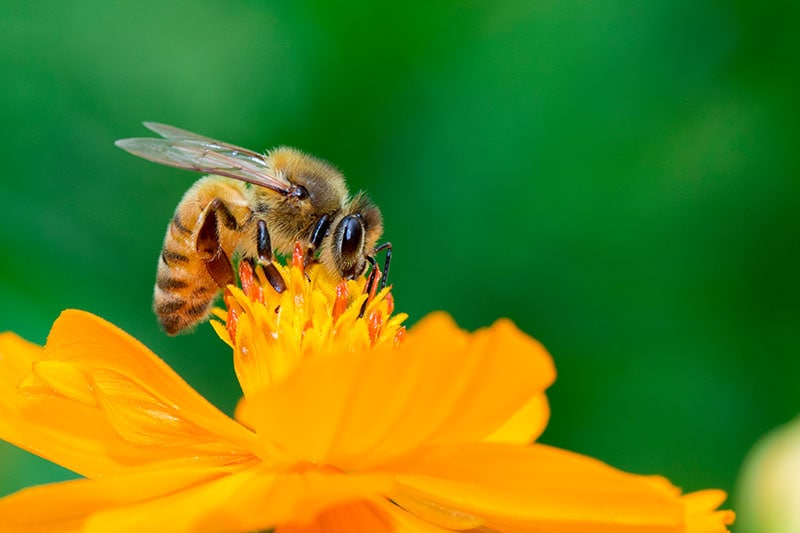
The official state insect of New Jersey has been the honeybee (Apis mellifera) since 1974. It was suggested by a group of students belonging to the Sunnybrae School in Hamilton Township. They gave a presentation at the New Jersey State House, including a poem and a song. Let’s learn more about this species and how they became the state insect of New Jersey.
Interestingly, honeybees are not even natives of New Jersey or the continent. In the 17th century, the first European settlers brought honeybees here. On June 20, 1974, they were adopted as the official insect or bug of the state and got registered in the 1974 Law. You can find them in the New Jersey Permanent Statutes, Title 52, Section 52:9A-3.
Researchers have documented around 300 bee species in New Jersey, but the Western Honeybee stole the main spotlight. Let’s take a deeper look into what makes these insects so unique to be termed as the state insect of New Jersey.
The Taxonomy of Honeybees
The hierarchy of the Western Honeybees is quite interesting. Here is a detailed view into the bees’ taxonomical hierarchy to give you a better understanding of these bugs:
| Kingdom: | Animalia |
| Phylum: | Arthropoda |
| Subphylum: | Hexapoda |
| Class: | Insecta |
| Order: | Hymenoptera (Bees, Ants, and Wasps) |
| Family: | Apidae (Honey, Cuckoo, Digger, Carpenter, and Bumble Bees) |
| Subfamily: | Apidae (Honey, Bumble, Orchid, Long-horned, and Digger Bees) |
| Tribe: | Apini (Honeybees) |
| Genus: | Apis |
| Species: | mellifera (Western Honeybees) |
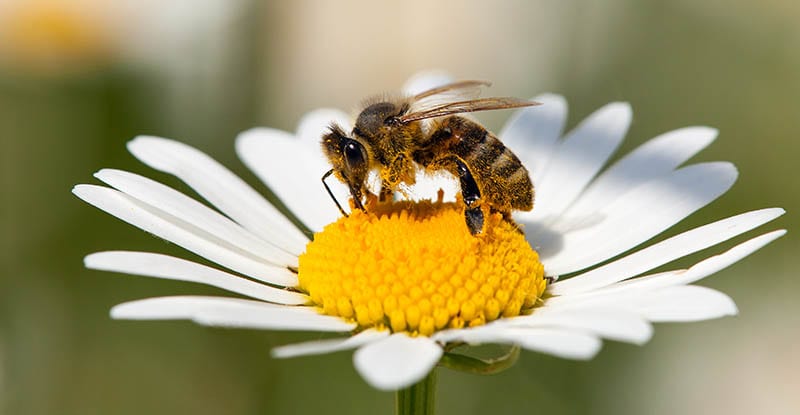
Honeybees: A General Overview
Honeybees are not native to New Jersey or America as a whole. Instead, they’re believed to originate in Tropical Africa and expanded from South Africa to Northern Europe. From there, they spread to the East—India and China.
The first English and Spanish colonists brought these insects to America. That’s how these bees got distributed in the entire world. Native Americans call these honeybees “white man’s flies,” which is for all the right reasons.
The first honeybees appeared in Eocene’s fossil record dating back 40 million years. These insects have retained their physical and social originality for about 30 million years.
Wild Honeybees are the foundation of our social food system. They maintain an ecological balance in our environment and are also essential to the survival of many plant species. These are also known as the “social insects,” capable of living, thriving, and growing in organized colonies.
Farmers and Orchardists love honeybees as they pollinate a significant portion of their crops. But these insects are better honey producers than pollinators. They also have a huge fan-following among people for their finger-licking, healthy honey.
The Vermont farmers give special treatment to honeybees. Although they’re found rarely in the state, beekeepers produce a massive amount of honey from these insects every year. The honey also serves as food reserves for the bee’s hive during rainy days. When flowers don’t bloom in the winter, the bees get little or no nectar to survive. That’s when they rely on honey.
The European honeybees manufacture honey in abundance—more than enough for the hive to eat and humans to harvest. That’s the main reason beekeepers around the world love these bees!
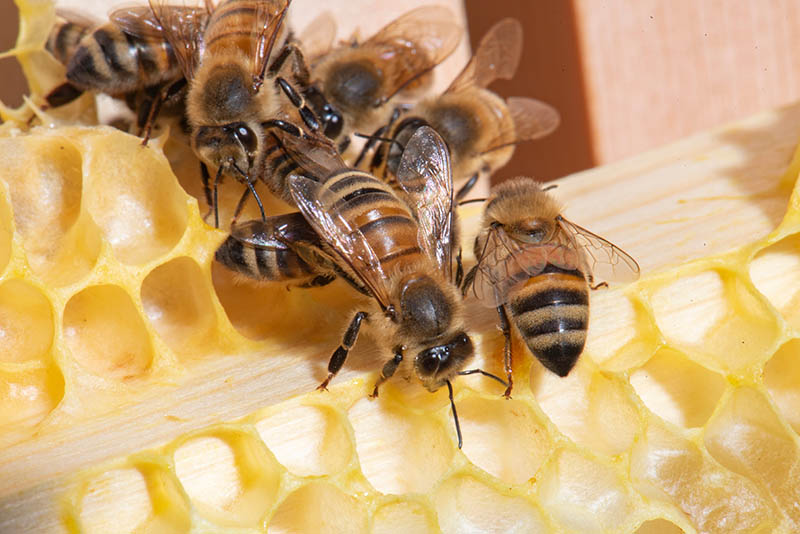
How Do Honeybees Live?
Honeybees live in hives consisting of a maximum of 80,000 bees. It is made of hexagonal cells with walls measuring only 2/1000 inches thick. However, it’s strong enough to support a weight of 25 times more than their own.
Every hive has one queen bee, a small male drone group, and worker bees. All these groups perform separate functions to keep the hive maintained.
This division of labor is essential to create a healthy environment in the hive. Here is a quick breakdown of all three groups—queen, drones, and workers—to better understand how things work in a honeybee colony.
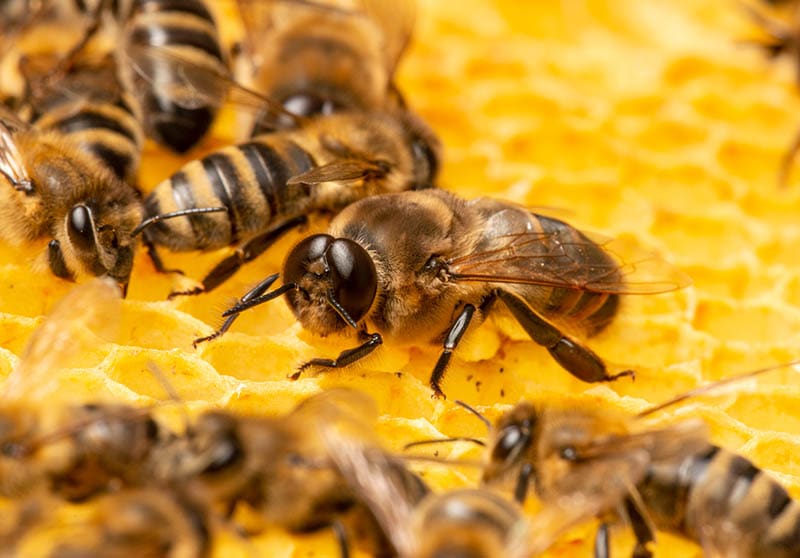
The Queen
The queen is the sexually active female group responsible for reproducing and increasing the bee colony. They are the largest group of bees. A queen is chosen when it’s just two days old in the larva stage.
The workers’ group selects the female larva, which comes out from the cell after 11 days, to mate with around 18 male bees (drones). The mating occurs during the flight, where the female receives millions of sperm cells. She can use these sperm throughout her life, which is approximately about two years.
After 10 days of mating, the queen starts laying eggs. The average count of eggs is about 3,000 in a day.
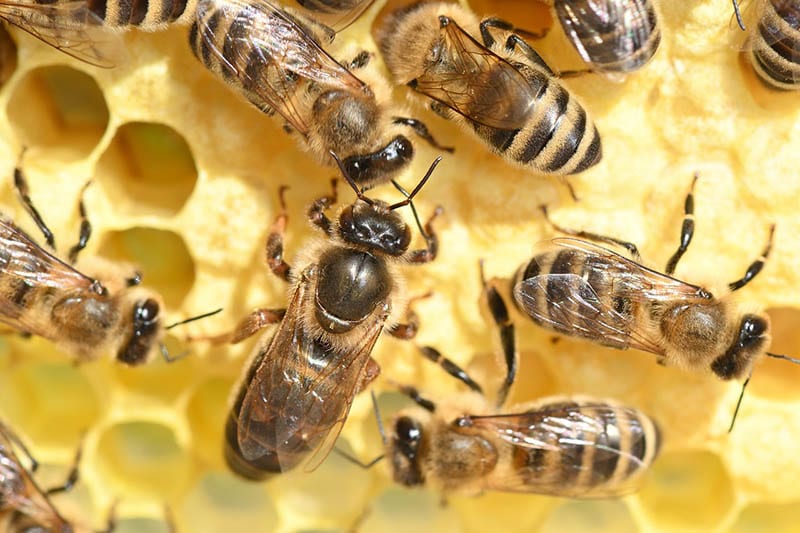
The Drones
A drone is a little group of honeybees consisting of stout males without stingers. These bees aren’t responsible for pollination or food collection from flowers. In fact, they don’t have any other purpose than to provide sperm to the females (queens) for reproduction.
Drones are the first ones to get kicked out of the hive when the bee’s colony becomes short on food. That’s because the queens already have a lifetime of sperm saved during one course of mating.
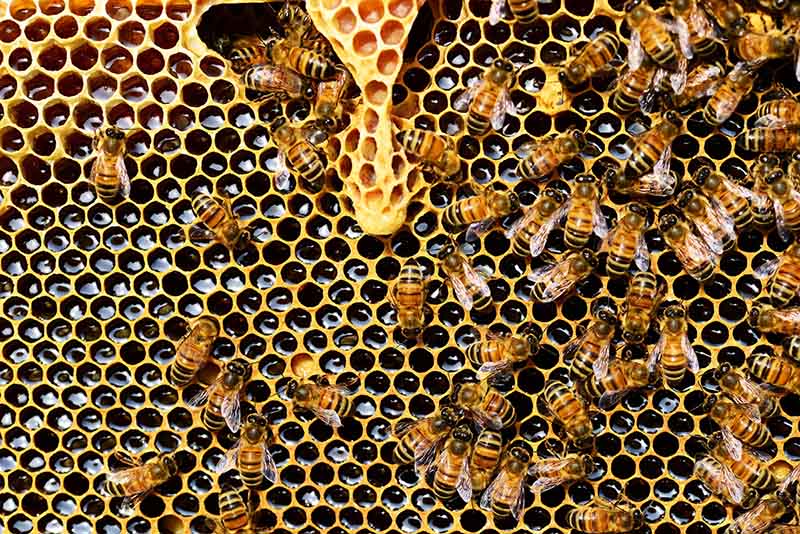
The Workers
Workers are small, infertile females in the hive. They are sexually undeveloped but are present in abundance in the colony. One colony can have 50,000–60,000 bees with varying lifespans.
The life expectancy of a worker bee is approximately 28–35 days. But it can vary depending on the time of year. For instance, worker bees born in October or September can live throughout the winter.
As evident from their name, worker bees do most of the work in the hive. They collect food for larvae and the queen, protect the hive from intruders, and maintain the inside environment of the hive by fanning their wings.
On average, honeybees can stroke their wings 11,400 times a minute. This continuous fanning of wings also results in the classic “buzz” of these bees.
 Conclusion
Conclusion
Honeybees are more than just small, honey-producing insects. They are the official state insects of New Jersey for many reasons. They may seem like just small insects, but they are an essential part of our ecosystem.
Honeybees grow alongside many plant species and become crucial for their survival over time. They also perform pollination, which is why farmers and orchardists love them.
These bees exist in hives and follow the division of labor. Every hive consists of a fertile queen, a group of male drones providing sperm cells, and workers performing all the colony’s critical tasks.
Featured Image Credit: Yod 67, Shutterstock
Contents
